Class 8 Geography Chapter 2 Notes - Land, Soil, Water, Natural Vegetation and Wildlife Resources Resources
| Table of contents |

|
| Introduction |

|
| Land |

|
| Soil |

|
| Water |

|
| Natural Vegetation and Wildlife |

|
Introduction
Nina lives in a Tanzanian village, where she fetches water, helps at home, and tends goats. Her family struggles to grow enough food on their small, rocky land.
Taylor, in New Zealand, lives on a sheep farm managed with modern technology. His family runs a wool factory and practices organic farming.
Nina's and Taylor's lives differ greatly due to the availability of resources like land, water, and technology, highlighting why different places vary so much.
So let's observe the land, type of soil, and water availability in the region where you live and how it has influenced the lifestyle of people.
Land
The land is among the most important natural resources. The land covers about 30% of the total area of the earth’s surface.
 Land
Land
- Ninety per cent of the world's population occupies only 30% of the land area. The remaining 70% of the land is either sparsely populated or uninhabited.
- The land is unevenly inhabited due to various factors, such as land and climate, water fertility of the soil, etc.
- Normally, the sparsely populated or uninhabited areas are because of rugged topography, steep slopes of the mountains, low-lying areas susceptible to water logging, deserted areas and thickly forested areas.
- The densely populated areas of the world have plains and river valleys that have suitable land for agriculture.
Land Use
Land use refers to the use of land use for different purpose such as agriculture, forestry, mining, building houses, roads and setting up of industries.

Land use is influenced by two main types of factors:
Physical Factors:
- Topography
- Soil quality
- Climate
- Availability of water
Human Factors:
- Population
- Technology
On the basis of ownership, land can be classified as private and community land.
- Private land is owned by an individual or family members and is used for personal purposes like a house is private land.
- Community land is owned by the community for common uses and can be used by anyone in the society like a collection of fodder, fruits, nuts or medicinal herbs. These community lands are also called common property resources.
Challenges in Land Use
- The demand for land by the people is growing, but the availability of land is limited.
- The vast changes in land use patterns show the cultural changes in our society.
- Land degradation, landslides, soil erosion, and desertification are the major threats to the environment because of the expansion of agriculture and construction activities.
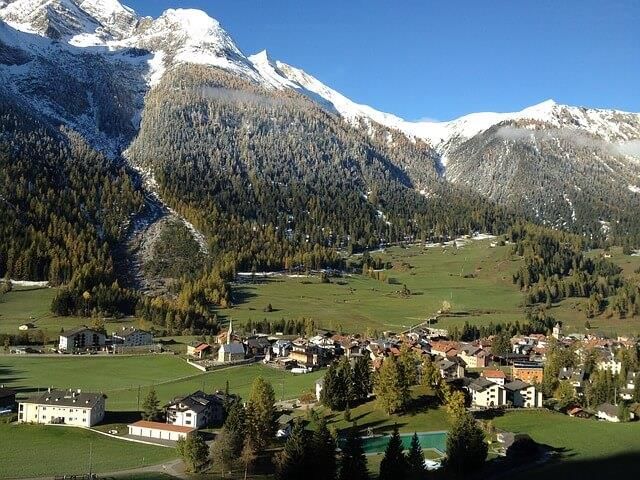 Land Habitation
Land Habitation
Conservation of Land Resources
- The growing population and their ever-growing demand have led to the large-scale destruction of forest cover and arable land and have created a fear of losing these natural resources.
- The present rate of land degradation must be checked.
- The common methods used to conserve land resources are afforestation, land reclamation, regulated use of chemical pesticides and fertilizers and checks on overgrazing.
Soil
- Soil is a thin layer of grainy substance covering the surface of the earth.
- Soil is made up of organic matter, minerals and weathered rocks found on earth.
- Soil profile refers to the layered structure which spreads from the parent rocks to the topsoil surface.

Soil
- The four layers of the soil profile are: 1st layer-top soil with humus and vegetation; 2nd layer-sub soil with sand, silt and clay; 3rd layer-weathered rock material; and 4th layer- Parent rock.
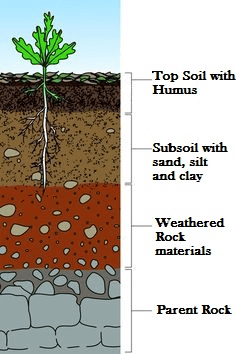 Layers of soil:- Soil Profile
Layers of soil:- Soil Profile
Glossary
Weathering:- The breaking up and decay of exposed rocks, by temperature changes, frost action, plants, animals and human activity.
Landslides
Landslides are the downward movement of rock, debris, or earth on a slope. They often occur alongside earthquakes, floods, or volcanic activity. Extended rainfall can trigger significant landslides, potentially blocking rivers and causing severe damage to downstream areas when these river blocks burst. In hilly regions, landslides are a common and serious natural disaster, posing a significant threat to life and property.
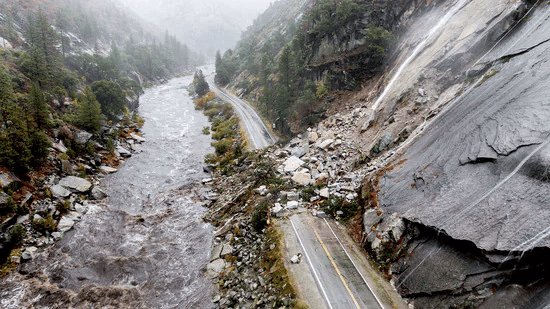 Landslide
Landslide
Case Study
A massive landslide struck Pangi village near Reckong Peo in Kinnaur district, Himachal Pradesh, damaging a 200-meter section of the old Hindustan-Tibet road, National Highway 22. The landslide was triggered by intense blasting in the area, causing the already unstable slope to collapse. This led to severe damage to the road and nearby villages. As a precaution, the entire Pangi village was evacuated to prevent any potential loss of life.
Migration Mechanism
Advancements in scientific techniques have enhanced our ability to identify the causes of landslides and develop strategies to manage them. Some key mitigation techniques include:
- Hazard mapping: Identifying areas prone to landslides to avoid building settlements there.
- Retention walls: Constructing walls to prevent land from slipping.
- Vegetation cover: Increasing vegetation to stabilize the land and reduce the risk of landslides.
- Surface drainage control: Implementing drainage systems to manage the flow of rainwater and springs, helping to control landslide movement.
Factors of Soil Formation
The major factors of soil formation are the nature of the parent rock and climatic factors. The other factors of soil formation are the topography, the role of organic material and the time taken for the composition of soil formation.

- Parent rock determines the colour, texture, chemical properties, minerals, content and permeability of the soil.
- Relief determines the altitude and slope and accumulation of soil.
- Flora, fauna and micro-organisms affect the rate of humus formation in soil.
- Climate determines temperature and rainfall, which influences the rate of weathering and humus in the process of soil formation.
- Time determines the sickness of the soil profile. It takes hundreds of years to make just one centimetre of soil.
Degradation of Soil and Conservation Measures
Soil erosion and depletion pose significant threats to soil as a resource, driven by both human and natural factors. Key contributors to soil degradation include deforestation, overgrazing, excessive use of chemical fertilizers or pesticides, rain wash, landslides, and floods.
Here are some methods for soil conservation;
- Mulching: Covering bare soil between plants with organic matter like straw to help retain moisture.
- Contour Barriers: Constructing barriers using stones, grass, or soil along the contours of the land, with trenches to collect water.
- Rock Dams: Piling rocks to slow water flow, preventing the formation of gullies and reducing soil loss.
- Terrace Farming: Creating broad, flat terraces on steep slopes to provide stable surfaces for growing crops, which reduces runoff and erosion.
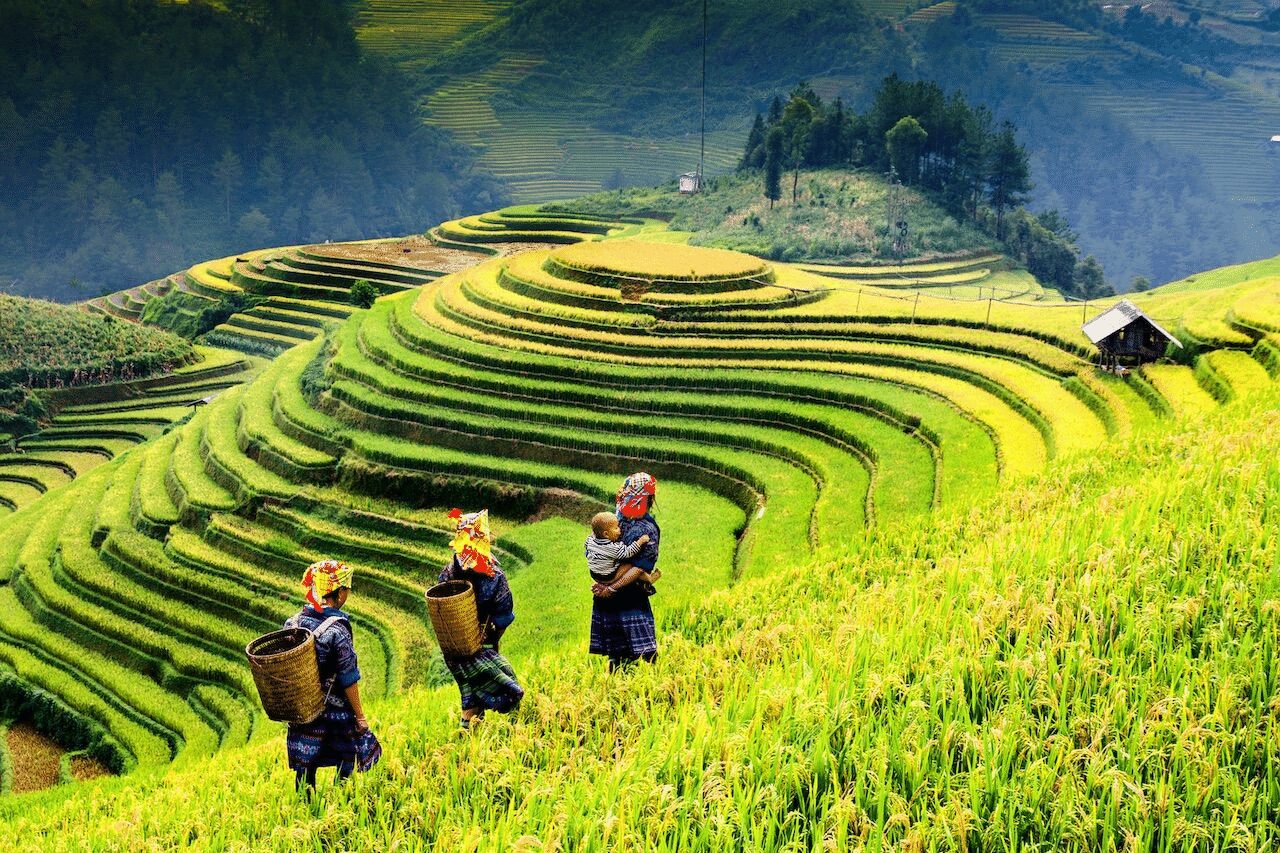 Terrace Farming
Terrace Farming - Intercropping: Planting different crops in alternating rows or at different times to protect soil from rain wash.
- Contour Ploughing: Ploughing along curves or contours of a slope to prevent water from running straight downhill.
- Shelter Belts: Planting rows of trees in coastal and dry regions to block wind and protect the soil cover.
 Shelter Belts
Shelter Belts
Water
- Water is a vital renewable natural resource. Three-fourths of the earth’s surface is covered with water. Therefore, it is called a ‘water planet’.
- Ocean water is saline and not fit for human consumption, whereas freshwater accounts for only 2.7% of the total water available.
- Only 1% of this fresh water is available and fit for human use and is found in groundwater, rivers, lakes, etc.
- Water on Earth remains constant in volume; it cannot be created or destroyed.
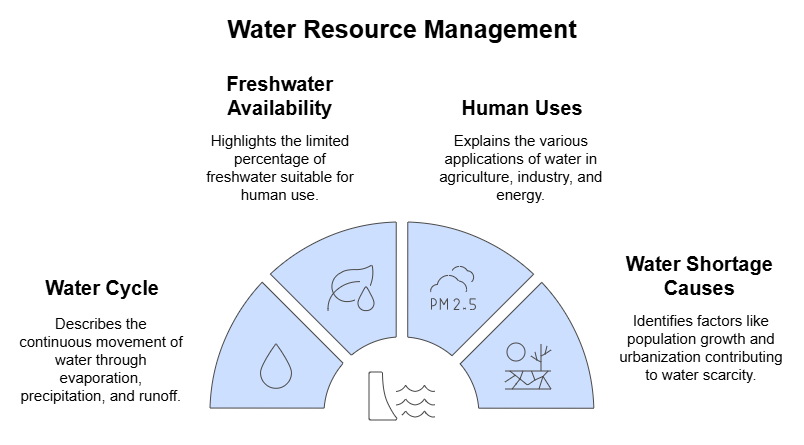
- Its apparent abundance changes because water continuously cycles through the oceans, the atmosphere, the land, and back again. This movement occurs through processes like evaporation, precipitation, and runoff, collectively known as the 'water cycle.'
- Water is used for agriculture, industries, generating electricity through reservoirs of dams, etc.
- The major causes of water shortage are increasing population, rising demands for food and cash crops, increasing urbanization and rising standards of living.
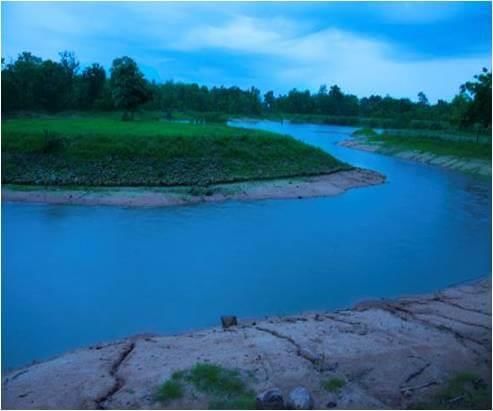 Source of Water
Source of Water
Problems of Water Availability
- There is a water shortage in many regions of the world. It may be a consequence of the variation of seasonal or annual precipitation or the scarcity is caused by over-exploitation and contamination of water sources.
- Countries located in climatic zones are most susceptible to droughts and face great problems of water scarcity, those are Africa, West Asia, South Asia, parts of western USA, north-west Mexico, parts of South America and entire Australia.
Conservation of Water Resources
The major problem of today’s world is a shortage of clean and adequate water sources. Steps should be taken to conserve water. Water is a renewable resource, but its overuse and pollution make it unfit for use.- Sewage, agricultural chemicals and industrial waste pollute the water with nitrates, metals and pesticides.
- Forest and other vegetation cover slow the surface runoff and replenish underground water.
- The water harvesting method can also be used to save surface runoff.
- Canals used for irrigation should be properly checked for water losses through seepage and evaporation.
- Rainwater harvesting is the process of collecting rainwater from rooftops and directing it to an appropriate location where it is stored for future use.
- Sprinklers effectively irrigate the area by checking water losses through seepage and evaporation. In dry regions with high rates of evaporation, drip or trickle irrigation is very useful.
Natural Vegetation and Wildlife
- Natural vegetation and wildlife exist only in the biosphere.
- The narrow zone of contact between the lithosphere hydrosphere and atmosphere is called the biosphere.
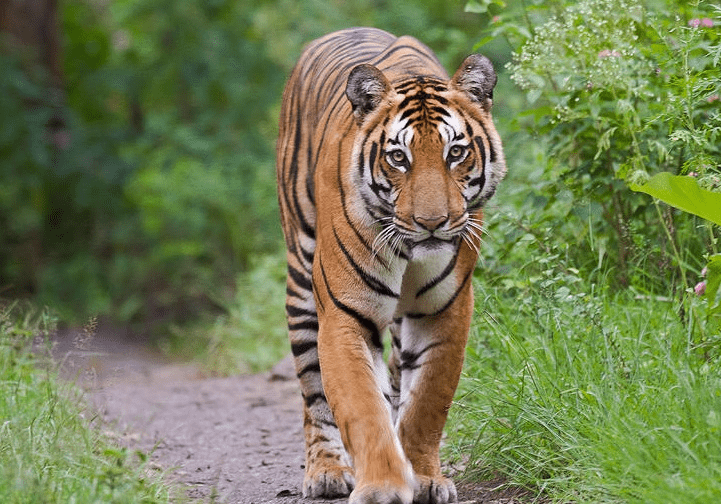 Tiger
Tiger
- In the biosphere, living beings are interrelated and dependent on each other for survival. This life-supporting system is known as the ecosystem.
- Plants provide us with timber, shelter for animals, produce oxygen, protect the soil for growing crops, act as shelterbelts, give us fruits and vegetables, help in the storage of underground water, etc.
- Wildlife includes animals, birds, insects and aquatic life forms. They provide us with milk, meat, hides and wool, help in the pollination of flowers, act as decomposers in the ecosystem, etc.
 A Bird
A Bird
Distribution of Natural Vegetation
The growth of vegetation depends on temperature and moisture.Forests, grasslands, scrubs and tundra are the major types of vegetation in the world.
- Forests are associated with areas having abundant water supply. These areas have heavy rainfall and huge trees.
- Grasslands are areas with short, stunted trees and grasses that grow in regions with moderate rainfall. As the amount of moisture decreases, the size of trees and their density decrease.
- Thorny shrubs and scrubs grow in dry areas of low rainfall. The plants of this region have deep roots and leaves with a thorny and waxy surface that helps reduce the loss of moisture through transpiration.
- Tundra vegetation of cold Polar Regions comprises mosses and lichens.
- Evergreen and deciduous are the types of forests depending upon when they shed their leaves. Trees of evergreen forests do not shed their leaves simultaneously in any season of the year. Deciduous forests shed their leaves in a particular season to conserve loss of moisture through transpiration.
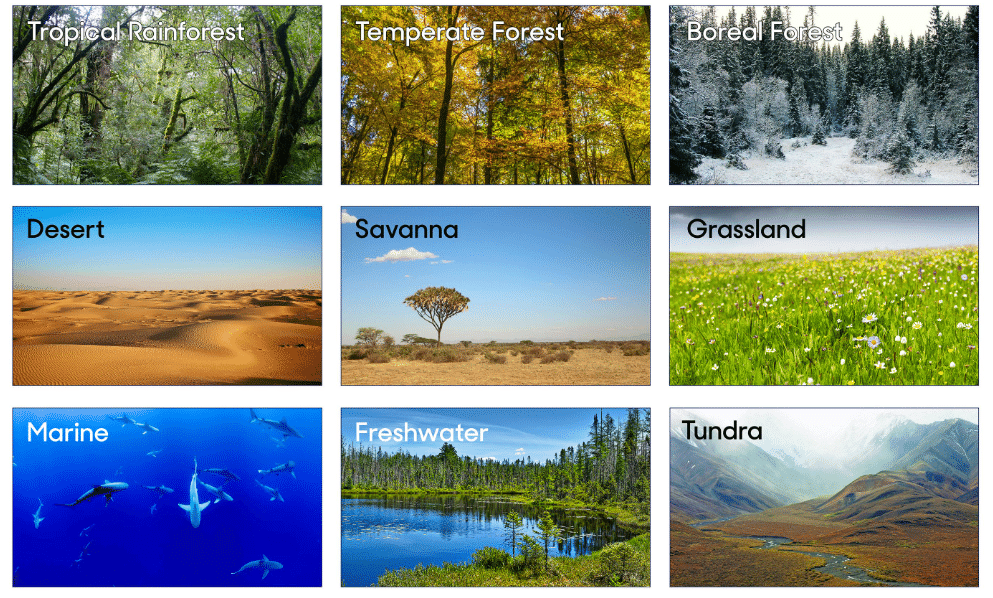 Types of Natural Vegetation
Types of Natural Vegetation
Conservation of Natural Vegetation and Wildlife
Forests as a Resource: Forests provide essential habitat for wildlife, support ecosystems, and contribute to biodiversity.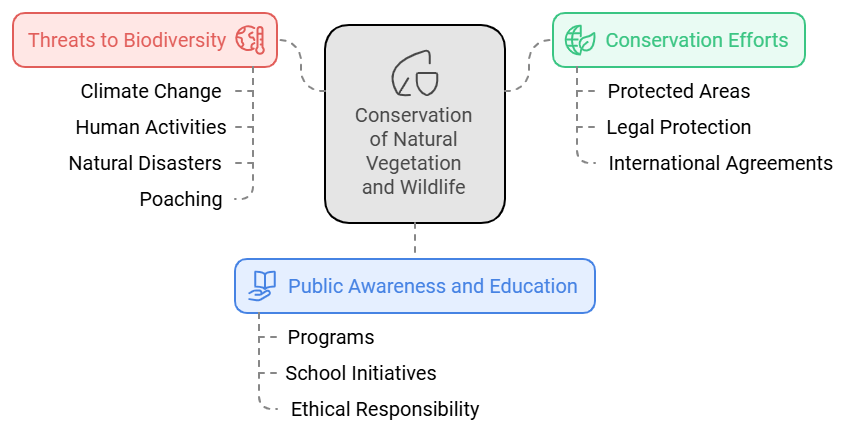
Threats to Biodiversity:
- Climate Change: Alters natural habitats, impacting plant and animal species.
- Human Activities: Deforestation, soil erosion, construction, and forest fires disrupt habitats.
- Natural Disasters: Events like tsunamis and landslides can also lead to habitat loss.
- Poaching: Illegal hunting for hides, skins, teeth, horns, and feathers threatens species such as tigers, lions, and rhinoceroses.
Conservation Efforts:
- Protected Areas: National parks, wildlife sanctuaries, and biosphere reserves safeguard natural habitats.
- Legal Protection: Laws prohibit the hunting and trade of endangered species (e.g., lions, tigers, and peacocks in India).
- International Agreements: CITES (Convention on International Trade in Endangered Species) restricts trade in threatened species.
Public Awareness and Education:
- Programs: Social forestry, Vanamohatsava, and nature camps educate people about wildlife.
- School Initiatives: Encourage bird watching and nature exploration among students.
- Ethical Responsibility: Conservation is a shared duty; protecting our planet's biodiversity ensures balance and sustainability for future generations.
Glossary
1. National Park A natural area designated to protect the ecological integrity of one or more ecosystems for the present and the future generations
2. Biosphere reserves Series of protected areas linked through a global network, intended to demonstrate the relationship between conservation and development.
3. CITES (the Convention on International Trade in Endangered Species of Wild Fauna and Flora) is an international agreement between governments. It aims to ensure that international trade in specimens of wild animals and plants does not threaten their survival. Roughly 5,000 species of animals and 28,000 species of plants are protected. Bears, dolphins, cacti, corals, orchids and aloes are some examples.
FAQs on Class 8 Geography Chapter 2 Notes - Land, Soil, Water, Natural Vegetation and Wildlife Resources Resources
| 1. What are the main components of land resources? |  |
| 2. How does soil affect agricultural productivity? |  |
| 3. Why is water considered a vital natural resource? |  |
| 4. What is the importance of natural vegetation and wildlife conservation? |  |
| 5. How can we sustainably manage land and water resources? |  |





















